20070501
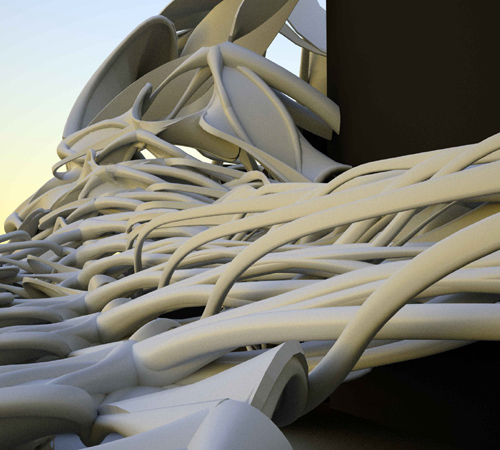
.: Jonas 7:00 AM
20070423
Final Review
Jury:
Gisela Baurmann
Michael Chen
Karl Chu
Carlyle Fraser
Ferda Kolatan
Jason Lee
Rhett Russo
Galia Solomonoff
Jason Vigneri-beane
People
.: Jonas 2:00 PM
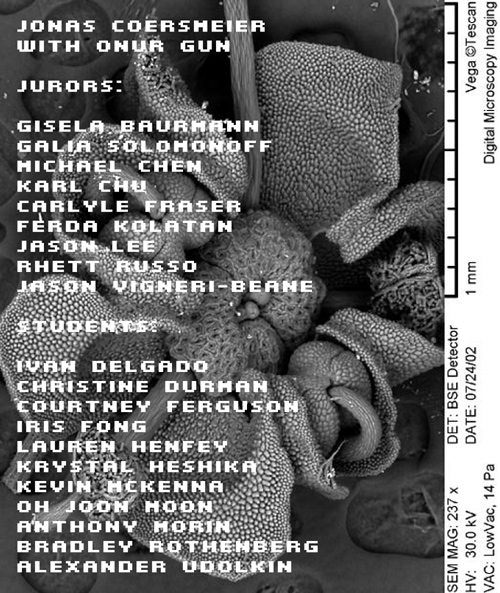
Memory Component
Inspired by new research on “grid cells” located in a memory center of the brain, and responsible for spatial orientation, the studio looks at a library as an applied system of memory components, one that is derived from the very artifacts it discusses.
The studio explores the fundamental principles of computational logic which formed the basis for the Universal Turing Machine of the 1940s and which apply to the substrate of our global brain today. Rather than staging a collection within a library and physical archive, the artifacts are understood as generators of a distinct and comprehensive system that performs on multiple levels.
The system generates an organism that is intrinsically part of the urban ecology at its site. Comprised of components, it acquires functionality through multi-dimensional growth from a material Nano scale to a Macro scale of urban intervention. It emerges as an intelligent parametric system capable of responding to a variety of architectural demands.
“The ability to find one’s way depends on neural algorithms that integrate information about place, distance and direction, but the implementation of these operations in cortical microcircuits is poorly understood. Here we show that the dorsocaudal medial entorhinal cortex (dMEC) contains a directionally oriented, topographically organized neural map of the spatial environment. Its key unit is the ‘grid cell’, which is activated whenever the animal’s position coincides with any vertex of a regular grid of equilateral triangles spanning the surface of the environment. Grids of neighbouring cells share a common orientation and spacing, but their vertex locations (their phases) differ. The spacing and size of individual fields increase from dorsal to ventral dMEC. The map is anchored to external landmarks, but persists in their absence, suggesting that grid cells may be part of a generalized, path-integration-based map of the spatial environment.” (Hafting, Fyhn, Molden, Moser, Moser)
.: Jonas 1:00 PM
20070421
Starlings
.: Jonas 10:00 PM
20070321
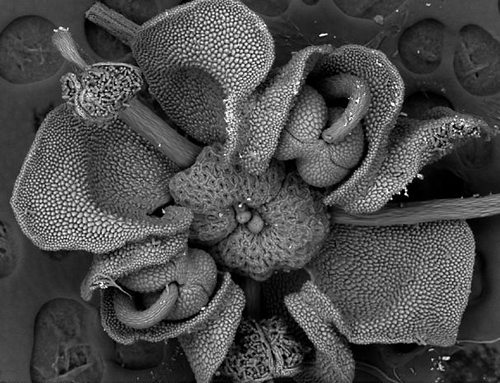
.: Jonas 8:00 AM
20070320
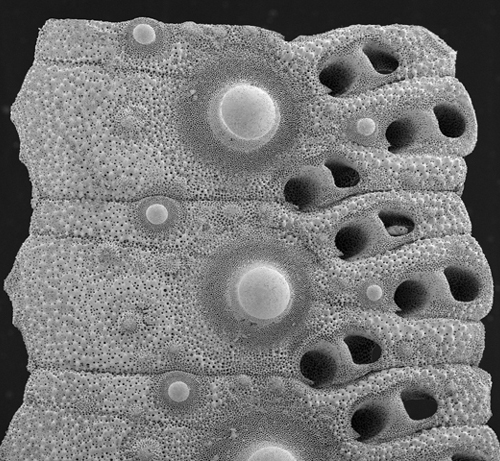
.: Jonas 2:00 PM
20070319
4 Program
please generate the program diagrams as we discussed today in studio for Thursday March 22nd. it was great to see you all today
consider:
- your formulated program bias
- building envelope models
- generative plans and sections
define:
- media present in your library (books, magazines, films, database (online or local), artifacts from the site)
- rewrite the program (your variation of the library porgram given in the general syllabus)
- invent 3 user profiles (they may relate to the focus of your urban investigation)
generate:
- time-based diagrams describing the spatial sequence each of the 3 users follows on his/her trip to the library.
the diagrams will be based on the spatial qualities that you discovered in your generative plans/sections.
identify:
adjacencies
sequences
overlaps
dead ends
recurrencies
bifurcations
mergers
loops
scale 1/8" = 1'
plan- and/or sectional views
these drawings describe relationships between program elements. they do not constitute building plans or -sections. they will allow you to specify your building envelope more precisely.
.: gisela 8:54 PM
20070308
MID REVIEW
HHS 111, Thursday 3/08, 1pm-6pm
JURY
Kaja Kuhl, Maria Sieira, Jeremy Carvalho, Michael Chen, Ferda Kolatan, Peter Macapia, Erich Schoenenberger, Jason Vigneri-beane
.: Jonas 1:00 PM
20070221
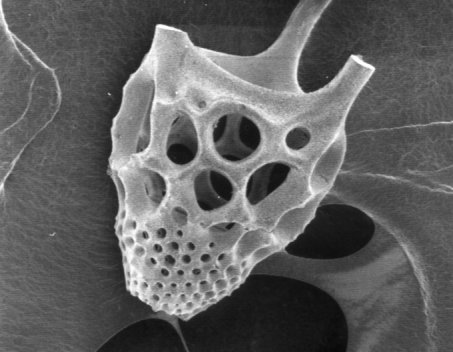
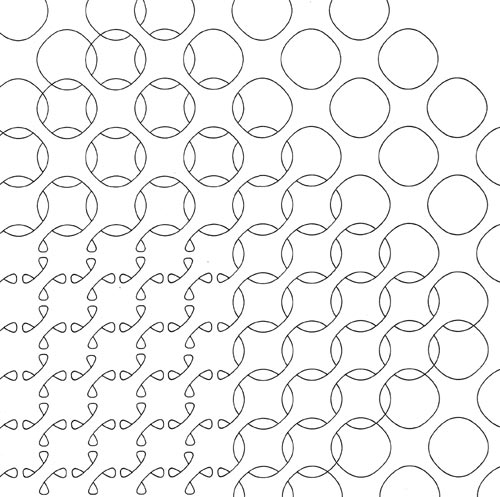
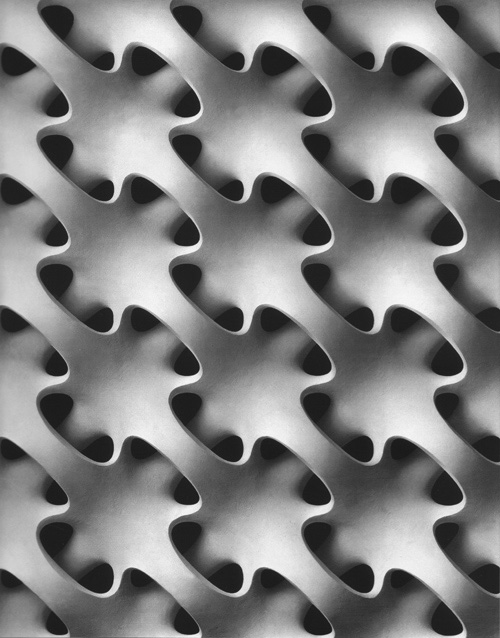
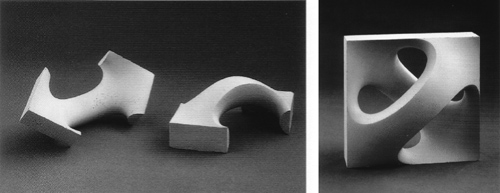 Erwin Hauer Erwin Hauer
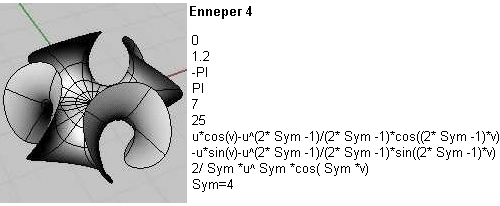 Math Math
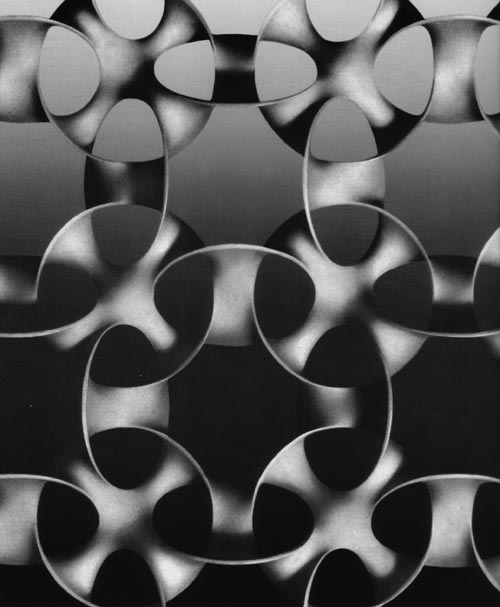
.: Jonas 10:54 AM
20070219
3.3 Generative Ground
3.3.1 Generative Section
Construct a generative longitudinal and - cross section, as well as a generative horizontal section (plan) from your paper Testing Ground. Use Rhino curves (2D) to generate the geometry; export to Illustrator and adjust line weights and - types.
A Generative Section is based on the precise information registered on a cutting plane through the paper model; points are measured, the actual model may be cut or remain intact. The measured section is the first layer of several that constitute the Generative Section. Polygonal Rhino lines (degree 2 curves) are most fit to incorporate the many points of the recorded data.
The second layer is based on Nurbs (degree 3 curves) and economizes control points to transpose the first "as is" section into a curve section of equivalent qualities. Every successive layer manipulates the control points, exaggerating the curve behavior and enhancing the Testing Ground's sectional qualities. A speculative drawing emerges, the Generative Section.
3.3.2 Generative Envelope
As a parallel investigation to the GC exercise 3.2.3, the bent, continuous surface is re-generated as a Nurb Surface, this time in Rhino. Revisit your Mesh Matrix and once more identify the generating Site Curves of the selected meshes.
Take the Nurb Curves out of the flat plane by carefully pulling their control points in the third dimension. Loft the curves, and employ additional Rhino surface tools. These moves are informed by the manipulations of the paper Testing Ground (cut, bend).
Follow the steps of "1.5 Site Mesh" and apply the mesh and triangulation tools previously calibrated in the Mesh Matrix. An advanced triangulated surface of extreme and continuous scalar change emerges, the Generative 3D envelope.
Cut sections through your digital model (use Rhino function of topolines), export to Illustrator and compare the sectional arrays to the Generative Sections developed in 3.3.1.
3.3.3 Generative Ground GC
Import the Generative Envelope 3.3.2 into GC. Use the prepared procedure and script package (studio blog: 20070216) to import the 3D Rhino Mesh into GC as shapes. Populate the Generative Ground GC with an improved component (mc_studentfirstname_x). Build a sample region in paper, and test its performance.
Cut a longitudinal and cross section, as well as a horizontal section (plan) through the tectonic GC model.
Size the sections to an appropriate architectural scale (1/2" or 1/4") and give some consideration to the human scale. Compare the drawing to a (partial) section through one floor of your precedent library; it shall include floor, ceiling, exterior wall/ façade and furniture. Identify the programmatic potential of your Generative Ground. Feed your findings into the next generation of the Generative Envelope.
.: Jonas 2:00 PM
20070216
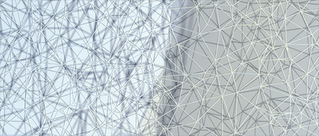 Here is the script package for importing your Rhino Mesh into GC as shapes- Here is the script package for importing your Rhino Mesh into GC as shapes-
Previous tutorials would help you in creating your components-
Mesh.zip
.: Species 1:01 PM
20070214
ad organization dwg:
Although diagrams can serve an explanatory function, clarifying form, structure or program to the designer and to others, and notations map program in time and space, the primary utility of the diagram is as an abstract means of thinking about organization. (Stan Allen)
.: Jonas 10:28 AM
20070212
It is a large field..
A simple triangulation method: Shape/ByPointGrid/FacetOption.TriangulationTop
.: Jonas 9:46 PM
3.2 Testing Ground GC
In the fifth week we conduct an intensive Generative Components exercise that will employ the current project data, and practice a finite set of tools within the software package. We work on the basis of the Testing Grounds (3.1) that have been informed by both, the site study and the library organizations.
[Site Mesh] = 2D mesh informed by site data
[Testing Ground] = Bent surface informed by site data and organization
[Cell] = Triangle (2D), element of Site Mesh or Testing Ground
[Component] = Spatial unit (3D)
The Testing Ground lays out geometric requirements for a Component system, which is continuously adjusted to be more responsive and fit to perform on the Ground. Each cell changes in scale and angle (triangle) [or it changes in number of points, scale and angle (voronoi polygon)] These parameters define the System's spectrum of change, from the local unit upward (neighboring conditions, global behavior). Simple Ground Rules define how the System components adjust to the cells of the Testing Ground. The ground rules are developed in GC, and they are immediately tested 'on the Ground' (paper).
3.2.1 Test Component
GC: Create a simple Generative Component on the basis of a triangular cell (input shape). Incorporate a relationship between the parameters of the input shape and the component’s third dimension, as well as its openness (aperture.) Print out variations of the component geometry (ortho wireframe) and its nodal network (symbolic view.) Articulate the component's geometric dependencies. Feature name: mc_studentfirstname_01x
3.2.2 Mesh GC
Rhino/GC: Import two point clouds from the two Rhino meshes selected for (3.1.) to GC and re-generate two separate shape (triangle) meshes. Follow the procedure via excelRange as described in "Rhino to GC : excelRange". Note that you can skip step 4 and 5 as the point cloud is derived from the site mesh.
GC: Populate Mesh GC by placing the new feature mc_studentfirstname_01x (3.2.1) onto the two flat meshes you just imported. Study the component's continuous variation, and adjust its parameters. Compare the two tectonic surfaces.
Paper: Build a sample region in paper. Bend the field and test its performance.
3.2.3 Ground GC
Rhino/GC: Revisit your Mesh Matrix and identify the generating Site Curves of the selected meshes. Follow the procedure via excelRange to import the respective points into GC. Use the imported points to generate a Bsplinesurface(s). The Bsplinesurfaces correspond to the nurb surfaces in your Mesh Matrix. Move the points in the third dimension and observe the curved surface. Identify the related curves within the paper models (3.1) and adjust the curves accordingly. Testing Grounds GC emerges. Populate Testing Ground GC with an improved component (mc_studentfirstname_02x). Build a sample region in paper, and test its performance.
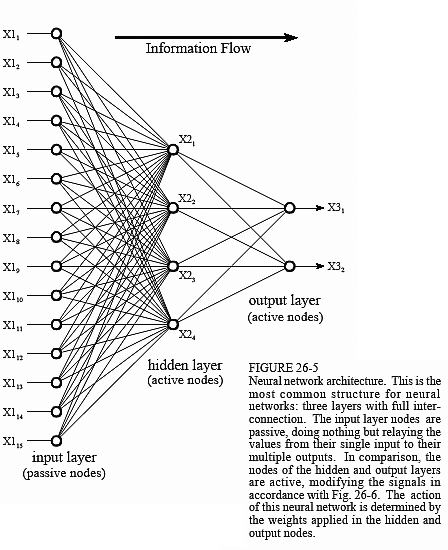
.: Jonas 2:00 PM
20070206

.: Jonas 11:31 AM
20070205
The internal plasticity of memory which 'distributed' models suggest is one of the most curious and characteristic features of human memory, and one which clearly differentiates our cognitive systems from the 'memories' of current digital computers. It's useful for the contents of the files stored on my computer to remain exactly the same from the moment I close them at night to the time I open them again in the morning. But various kinds of reorganization and realignment often happen to the information retained in my brain over the same period. In us, memories do not naturally sit still in cold storage.
In connectionist cognitive science, occurrent remembering is the temporary reactivation of a particular pattern or vector across the units of a neural network. This reconstruction is possible because of the conspiring influences of current input and the history of the network, where this history is sedimented in the particular connection weights between units. Memory traces are not stored statically between experience and remembering, but are piled together or 'superposed' in the same set of weights. In fully distributed representation, the same resources or vehicles are thus used to carry many different contents. (Stanford Encyclopedia of Philosophy)
3. Memory Structure
3.1 Testing Ground
Two sheets of identical laser scores are manipulated to form a continuous surface, a Testing Ground for the studied organizations (2.1.)
The scored sheets reveal a site-specific mesh that is read as a collection of Material Memory Traces. The traces form fields of different density and induce changing material properties. Areas of higher resolution (smaller polygonal cells) allow for higher degrees of curvature. When exposed to pressures the different areas of pliability reveal topological qualities.
Very few cuts - continuous and along score lines - and very few edges for attachment are needed to provide continuity between the two surfaces. Manipulations are guided by the inherent material properties and follow the Memory Traces. - Work with the material, not against it. At specific moments a surgical intervention opens up new opportunities. Record your operation; write up their sequence and develop a recipe for generating a continuous Testing Ground.
From a tight selection of Site Meshes (two or three) generate several Testing Grounds. Laser score multiple copies of each mesh and build different versions. The Grounds test different organizational models of Collection, Storage, Display and Circulation as they were established in the previous assignment. Some organizational models are augmented to be more responsive and fit to perform on the Testing Ground. Work from your notations 2.1 and allow your alien morphology 2.2 to inform the models.
Resources:
- Barr: Topology
- Francis: A topological Picturebook
- Stanford Encyclopedia: Memory
- Bergson: Matter and Memory (suggested)
.: Jonas 2:00 PM
Review One
Monday 2/5 HHS 517 at 1:00 pm
Jury: Gisela Baurmann, Maria Sieira , Peter Macapia
Deliverables:
SITE STUDY
MESH MATRIX
LIBRARY STUDY
.: Jonas 1:00 PM
20070203
found surveillance sketch
.: Jonas 5:27 PM

just thought, I share this with all of you after the discussion we had about the formal vs. informal culture. (I know you used different terms, which don't remember right now), but if anyone is interested in a little bit of background on advertisement on construction scaffolding, this is a good summary of the bizarre situation.
.: kaja 11:19 AM
20070129
Should a batch of input spark emotional ignition, the limbic system routes the hot arrival to the storage lockers of cognition - the cooling vaults of memory. But not all storage lockers are the same. There are two radically different sorts of memory storerooms in the human brain.
The first are antique caches inherited from the animals who came before mankind. They handle visceral memories, things we can't express and yet remain after they're through: the potent feeling of joy or agony; or our learning to perform a feat of derring-do - ice skating through a triple twirl, shooting a wave, detecting a luscious, deeply buried root or hammering the tough shell of a nut so that it yields its fruit. These muscle- and emotion memories are slid to the amygdala, arch sorter of such thing, which slings its parcels to a safekeeping net of axons called the striatum. Extra information is packed away in the motor and sensory corridors, the cerebellum, and a widespread nervous system so out of our control that its very name - autonomic - comes from its autonomy, its stubborn independence from our sense of a conscious "me". A wide variety of animals practice wordless habit stashing. It's the core of imitative learning and of body memory. The result is the behavioral meme, a skill or a strong inkling well beyond the realm of human thought. [..]
Broca's area, the brain enhancement possessed 2 million years ago by the Homo habilis known as KNM-ER 1470, helped create entirely new forms of data cabinets, those which house verbal memories. Verbal memes, the kind we can convey by speech, the kind that our storytelling consciousness can spin into debates, myths, tall tales, complaint, or the instructions with which we teach, take a different route to memory. They slide back to the curved prongs of the hippocampus which flip them forward to the cortexes of the temporal lobes, accessible to manipulators like Broca's area and to two other verbal twiddlers which emerged in early Homo habilis - the supramarginal and angular gyri. These are some of the processors which piece together data fro our inner voices and our blathering tongues. They are the brain devices from which verbal memes are wrung.
- Howard Bloom: Threading a new tapestry
2. Library
Defining the library. In a second exercise some precedent organizations are studied and the program is defined. We refrain for a moment from the existential question of the library - namely that of its role in a global neural network - and probe instances in an evolution of built memory organization. We read plans and sections of prominent libraries, and, beyond typologies, we find organizational models. We test these models outside of man-made constructs, under water that is. Only then do we continue to speculate about the program that can be plugged into these organizations.
.: Jonas 2:00 PM
20070126
Latest version of GC including help features and example files
Conceptual overview of GenerativeComponents by Roly Hudson
.: Jonas 9:23 PM
20070125
2004 Seattle Library (OMA)
2004 Philological Library (Foster)
2004 Utrecht University Library (Arets)
2001 Sendai Mediatheque (Ito)
1999 Aveiro University Library (Siza)
1992 Jussieu Competition (OMA)
1995 Bibliothek de France (Perrault)
1989 Center for Art and Media, Karlsruhe (OMA)
1972 Exeter Library (Kahn)
1967 Staatsbibliothek Berlin (Scharoun)
1964 Alcuin Library, St. John's University (Breuer)
1963 Beinecke Rare Book Library, Yale (SOM)
1935 Viipuri Library (Aalto)
1927 Stockholm Library (Asplund)
1911 New York Public Library (Carrere & Hastings)
1868 Bibliotheque Nationale, Paris (Labrouste)
.: Jonas 9:40 PM
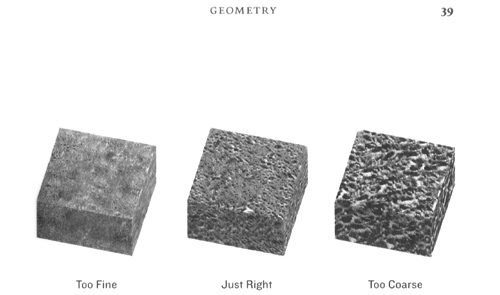
Reiser+Umemoto
.: Jonas 9:00 PM
20070122
Let us go back to the map and the territory and ask: "What is it in the territory that gets onto the map?" We know the territory does not get onto the map. That is the central point about which we all are agreed. Now, if the territory were uniform, nothing would get onto the map except its boundaries, which are the points at which it ceases to be uniform against some larger matrix. What gets onto the map, in fact, is difference, be it a difference of altitude, a difference of vegetation, a difference in population structure, difference of surface, or whatever. Differences are the things that get onto the map. A difference, then, is an abstract matter
- Gregory Bateson, Steps to an Ecology of Mind
1.5 Site Mesh
Assemble a Matrix of Site Meshes (Mesh Matrix) that are generated from site data 1.2 (Site Notations, Bottom-Up). Reserve three columns for the previously selected programs/activities and three columns for meaningful pairings, your focus here can be derived from your own notations or from the studio collective. Site Lines carry site-specific information, which consequently registers in the Site Mesh. Laser score a selection from the Mesh Matrix.
.: Jonas 8:00 PM
Kaja Kuehl of NYC Department of City Planning will join our Site Study Pin-up on Monday at 4pm.
Also on Monday: GC set up session with Erich Schoenenberger in HHS 416 from 2-4pm.
Please have everything pinned up - 4th floor hall - before 2pm so you can present right after the GC session.
.: Jonas 7:00 AM
20070119
When you set up your blog (blogger.com) use this layout (copy and paste > Template)
Also, > Formatting/Show: 999 posts; Formatting/Enable float alignment: no
.: Jonas 3:04 PM

I quickly tested the newest version, and it has many bugs.
So I would recommend you to install version 08.09.02.54, and keep away from 08.09.03.19, which is the latest build. I’m sure Bentley Systems (Robert Aish) will try to release a new version before the SmartGeometry workshop which will take place at the end of the month but I’m doubtful about its success since they don’t have enough time to fix everything. We'll be starting the GC sessions on Thursday, 25th.
.: Species 10:42 AM
20070118
In any case, until fairly recently, the Bowery always possessed the greatest number of groggeries, flophouses, clip joints, brothels, fire sales, rigged auctions, pawnbrokers, dime museums, shooting galleries, dime-a-dance establishments, fortune-telling salons, lottery agencies, thieves' markets, and tattoo parlors, as well as theaters of the second, third, fifth, and tenth rank. It is also a fact that the Bowery is the only major thoroughfare in New York never to have had a single church built on it. (p.12)
Chinese men sold candy and cigars. Men in general sold tobacco, socks, suspenders, hose, yarn, and gloves. Women sold most of the food, although, after the era of the hot-corn girl, roasted ears were almost always sold by black men. Boys sold ties, pocketbooks, pocket book straps, and photographs. Little girls sold matches, toothpicks, songs, and flowers. After the Civil War, lame soldiers held the monopoly on shoestrings, and they also sold ties and a lesser rank of books and magazines. Italians dispensed ice cream; Germans dealt in sausages. (Luc Sante: Low Life, p. 63)
1. Site
Building the site. In a first exercise the site is re-generated. The Given Site, located in the Bowery, provides source material for an actual Project Site, which acts as a project specific design catalyst. The primary site study synthesizes a top-down planning approach with an emergent bottom-up investigation into reading the urban ecology. In the process the Project Site is built. By re-generating the site, the projects become contextualized within a value system that is formulated by the author(s). Exercise One is conducted in teams of two.
1.1 Site Terms
Our first approach to the site is through an array of terms, the Site List. Record activities within two blocks of the Given Site by writing a list of terms. Refer to the lists of people, actions and items written up by Luc Sante in Low Life. As Walt Whitman did before him, Sante draws up clouds of activities, describing an urban milieu specific to the 19th century Bowery. You may assemble several lists of terms or phrases describing activities, items, scenarios etc.. Each list is consistent in itself in terms of its category and modus.
1.2 Site Notations, Bottom-Up
From your site lists identify three urban programs or activities (Example: Garages, Billboard Guerrilla ads, Surveillance Cameras, Psychics, Bars, Vendors, Deli/Bodegas) and generate a map that records their location around the area of the Given Site. From the locations map develop a line drawing that traces the interaction between program or activity points (dynamic site map). Lay out as a sequence of six simple line drawings, one point cloud and one vector map per activity.
1.3 Site Notations, Top-Down
In a sequence of three simple line drawings conduct a concise analysis of the Island of Manhattan, how the City works and how the Bowery and the Given Site relate to the City. As a group cover three topics: Land Use, Density, Transportation, Structure, The Grid, Fabric, Volumes, Building height, Building type, Light, Topography, Library locations, Entertainment locations. Identify a set of "Manhattan Rules" based on your analysis. Such rules may be articulated in conditional 'If-Then' statements. Example: If an Avenue meets Broadway - Then there is an open plaza.
1.4 Pin-Up
Layout and print on one sheet your word lists, rules and nine notations for the pin-up on Monday 01/22.
.: Jonas 7:00 PM
20070113
The ability to find one's way depends on neural algorithms that integrate information about place, distance and direction, but the implementation of these operations in cortical microcircuits is poorly understood. Here we show that the dorsocaudal medial entorhinal cortex (dMEC) contains a directionally oriented, topographically organized neural map of the spatial environment. Its key unit is the 'grid cell', which is activated whenever the animal's position coincides with any vertex of a regular grid of equilateral triangles spanning the surface of the environment. Grids of neighbouring cells share a common orientation and spacing, but their vertex locations (their phases) differ. The spacing and size of individual fields increase from dorsal to ventral dMEC. The map is anchored to external landmarks, but persists in their absence, suggesting that grid cells may be part of a generalized, path-integration-based map of the spatial environment. (Hafting et al.)
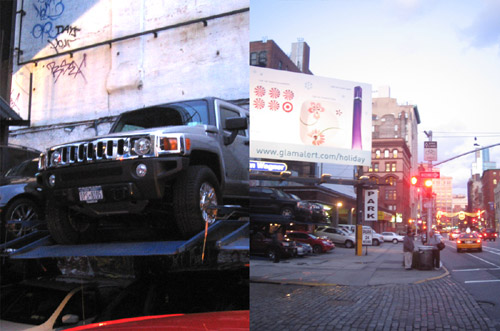
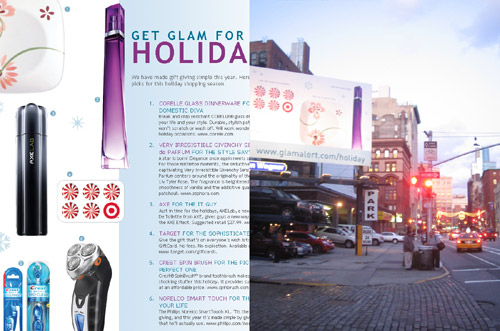

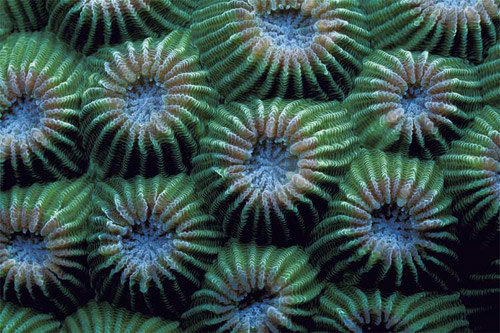
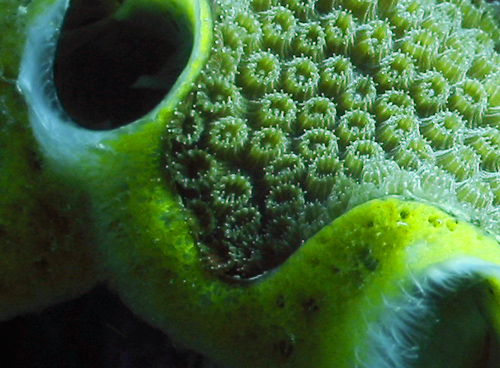
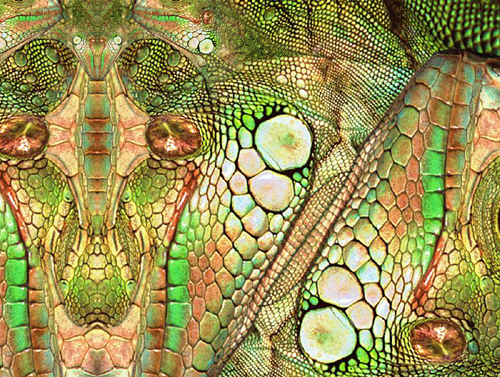
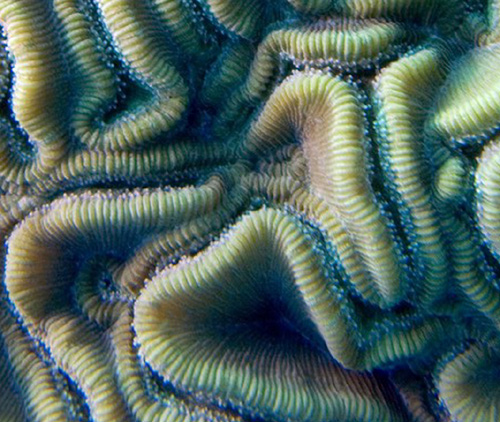
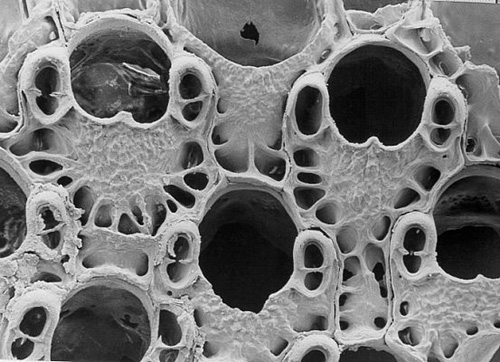
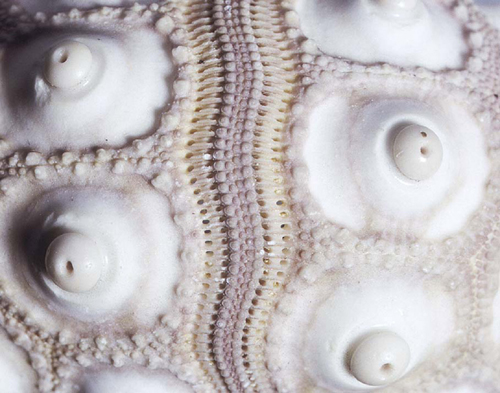
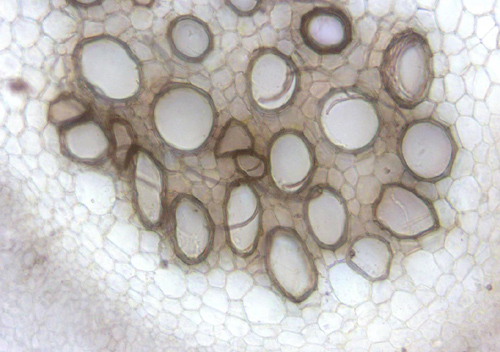
.: Jonas 9:34 PM
|







 Erwin Hauer
Erwin Hauer Math
Math















